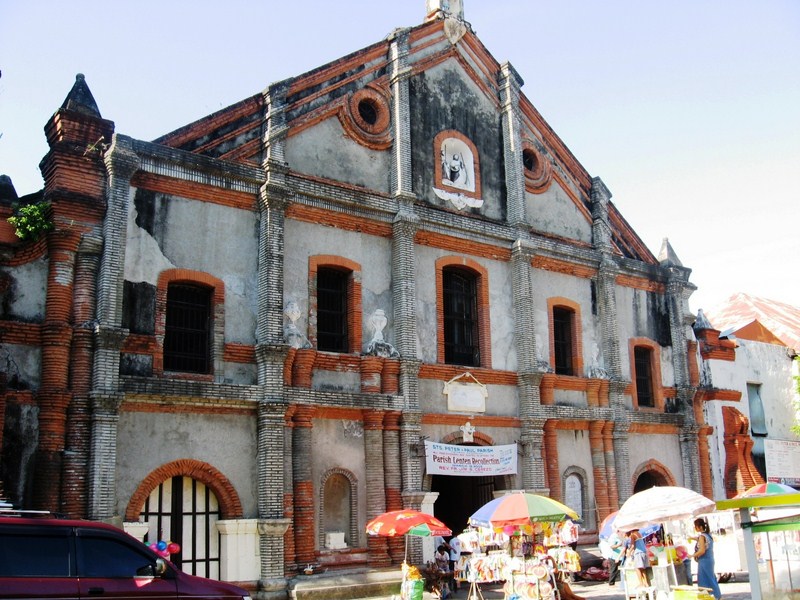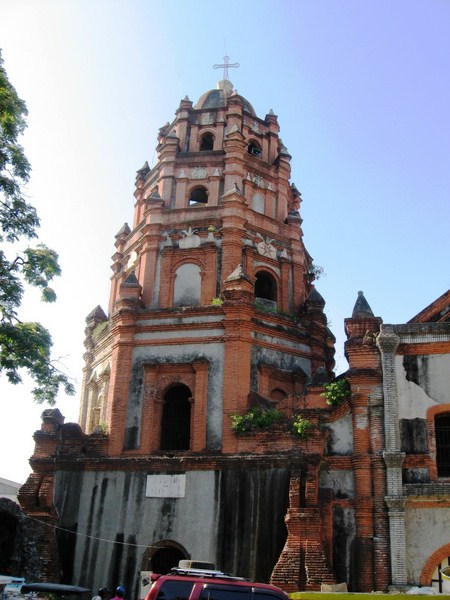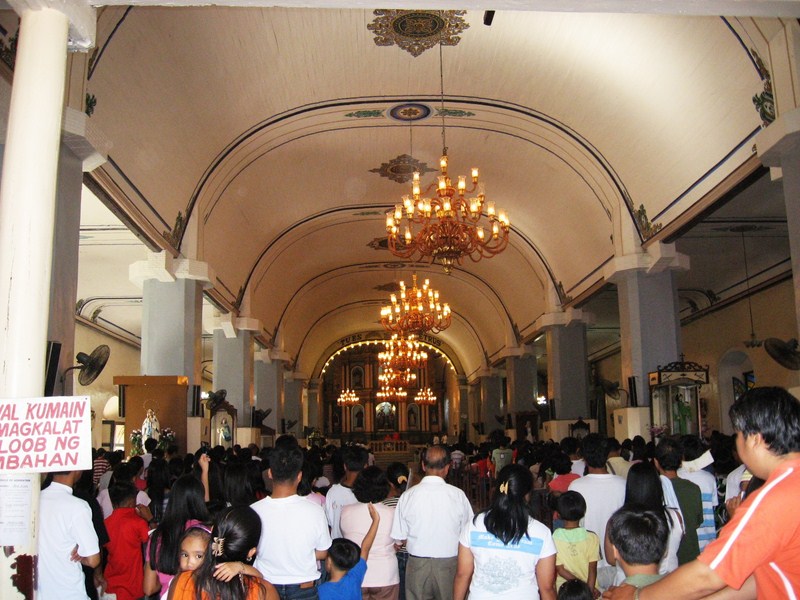| Guagua’s Church of St. James the Apostle |
From Bacolor, we next proceeded to Brgy. Betis in the woodworking (furniture, guitars, pool sticks, etc.) town of Guagua, my late father’s hometown, where we were welcomed by Sangguniang Bayan member Anthony Joseph “Tonton” Torres and Guagua councilor Roy Sunglao at the 17th-century Church of St. James the Apostle. The church, now honored as one of 26 National Cultural Treasures by the National Museum, has a profusely ornamented, two-level, German Baroque façade with decorative, coupled columns and skillfully arranged flora, spirals and intricate curvilinear carvings decorating the projecting portico. The church’s wooden entrance doors are intricately carved with the “Dreams of Jacob” from the Old Testament.
| The breathtaking trompe l’oeil dome |
Its awe-inspiring interiors are something else. The huge, elaborate retablo is furnished with authentic icons, while spectacular murals of 19th century artist Simon Flores, as well as the father-and-son team of Macario and Jose Ligon (finished before World War II), fill the walls. The interpretation of the Bible is painted on the entire wooden ceiling and the breathtaking trompe l’oeil dome, truly the Philippine’s version of the Sistine Chapel of the Vatican. At the center of the plaza, fronting the church, is the first artesian well in the Philippines, built by Fr. Manuel Camanes in the late 19th century. Before leaving Guagua, I bought some yema and pastillas as pasalubong. Check out my Business Mirror article “Tripping on History and Culture in Pampanga.”
Pampanga Convention and Visitor’s Bureau (PCVB): c/o Everybody’s Café, Nepo Mall, Brgy. Del Pilar, City of San Fernando, Pampanga. Mobile number: (0917) 245-4834. E-mail: poch168@gmail.com.












